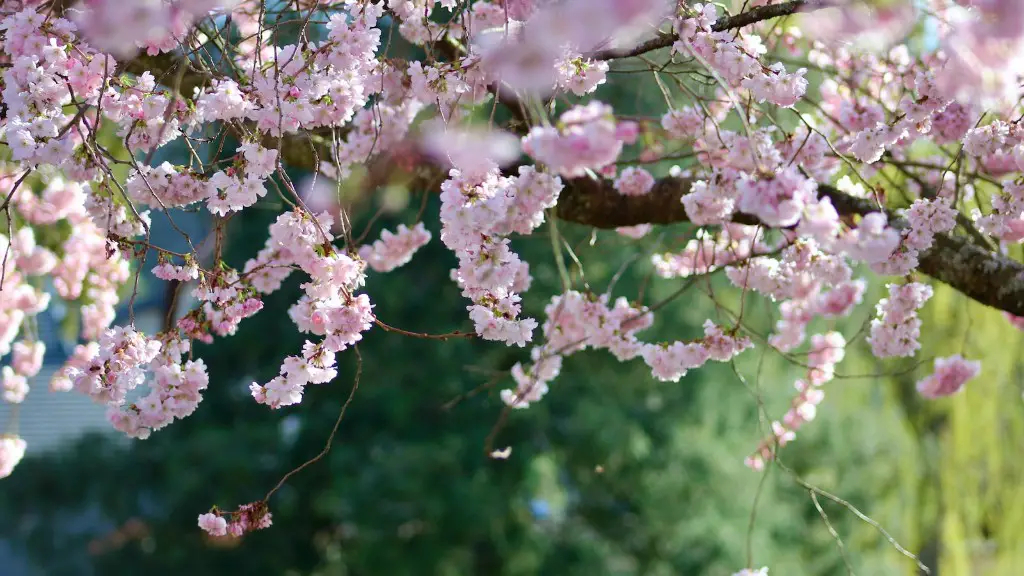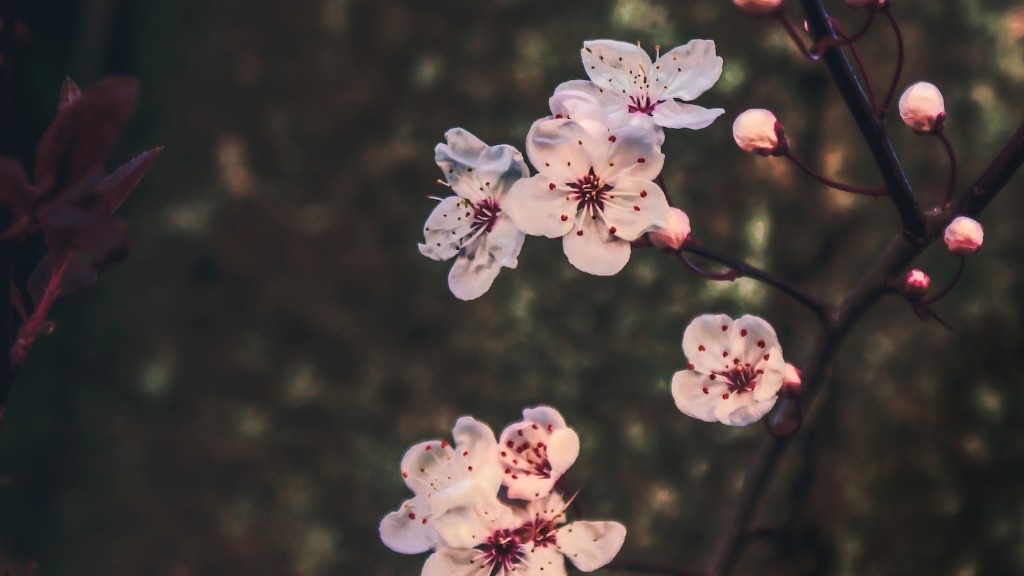White spots on a lemon tree leave may be caused by a variety of different maladies, ranging from vitamin deficiency to fungus infection. In some cases, controlling the problem is as simple as fertilizing regularly, or adjusting the water temperature. In others, it can be complicated, requiring the application of a pesticide or other control measures. As with any issue with a planted tree’s foliage, understanding the underlying problem is absolutely key to prevent further damage.
In order to properly address white spots on leaves, one first needs to determine the underlying cause of the condition. If it’s a vitamin deficiency, for instance, the remedy may be as simple as supplementing with fertilizer containing the deficient nutrient. On the other hand, if it’s a fungus, treatment with fungicide may be necessary.
It’s also important to observe the environment of the lemon tree and make sure that it’s receiving the care it requires. Insect infestations, for instance, can sometimes lead to white spots on the leaves. To prevent this, make sure that the tree’s surroundings are properly pests-proofed and free of debris that might offer hiding places for insect pests.
Sometimes, white spots can also be a sign of environmental stress. If the tree is planting in an excessively shady area, or if it is getting too much sun, it can start to show signs of distress. As with any other problem, it’s essential to ensure that the tree is planted in its optimal environment and is getting the right amount of light and water.
Finally, it’s also important to watch out for overwatering. Too much water can cause leaves to become discolored or even drop off entirely. Make sure to water cautiously and only when necessary, and watch out for signs of water stress in the tree.
Nutrient Deficiency
Sometimes, white spots are caused by nutrient deficiencies. If a tree is not getting enough of an essential nutrient, such as copper or nitrogen, its leaves may start to develop white spots. Fertilizing with the proper nutrient can sometimes be enough to address the problem.
A soil test can also be helpful in diagnosing a nutrient deficiency. Most garden centers can provide soil tests that will help in determining the composition of the soil. This can be useful in helping to identify which nutrients are lacking in the soil and what needs to be added in order to help the tree to grow optimally.
In some cases, however, it may not be possible to sufficiently supplement the soil with the missing nutrient. For instance, if the tree is planted in a pot with no soil or in a nutrient-deficient location, it may be necessary to apply a fertilizer specially designed for lemon trees directly to the leaves, bypassing the soil.
Supplementing with fertilizer can also be helpful in other cases. Particularly if the trees are being grown in pots or in soil that does not provide the necessary nutrients, fertilizers can help to support optimal growth.
It’s important, however, to make sure that the fertilizer is specifically designed for lemon trees; other fertilizers can cause white spots if applied incorrectly.
Fungal Infection
Fungal infections can also lead to white spots on the leaves. These fungi are usually caused by water stress or poor air circulation, and they can quickly spread if not treated quickly and appropriately.
Fungal diseases can be identified by their distinct white or yellow spots that may appear on the leaves and stems. In some cases, these spots will also be surrounded by a yellowish or brown halo, which is a clear sign of the disease.
Treating a fungal infection usually involves the application of a fungicide or other type of pesticide. It’s important to follow the directions on the product exactly; not only will this help ensure that the fungus is properly treated, but it will also prevent any further damage to the tree.
It’s also important to take measures to prevent the spread of fungal infections. Good air circulation, proper watering, and avoiding excessive wetting of the foliage are all essential to preventing the spread. Additionally, if the tree is being grown in a pot, it’s important to keep an eye out for outbreaks, as the fungus can quickly spread from one potted plant to another.
Finally, it’s important to use the right fungicide for your particular type of tree. Different fungicides will be effective in different situations, so it’s important to choose one that is specifically designed for the type of plant or tree you are dealing with.
Pest Infestation
Pests can also cause white spots on the leaves. Insects such as aphids and whiteflies can feed on the leaves, causing them to become discolored or develop white spots. In addition, these kinds of parasitic insects can spread diseases that can lead to even more damage.
In order to prevent pest infestations, it’s important to make sure the surroundings of the lemon tree are properly treated. This can help to protect not only the tree itself, but also any other plants or trees near it. Additionally, it’s important to thoroughly inspect the tree regularly, as pests can quickly become a problem if they are left unnoticed.
In addition, insecticides and other forms of pest control can be helpful in controlling a pest infestation. Again, it’s important to make sure that the right pest control product is being used; some products may be toxic to specific plants or trees, or can cause even more damage if applied incorrectly.
Finally, it’s also important to monitor the environment of the lemon tree. Areas with poor drainage or excessive moisture can quickly become a breeding ground for pests, and it’s important to be aware of any potential sources of these kinds of pests. Additionally, it’s important to keep an eye out for any dirt, debris, or even weeds that might offer convenient hiding spots for pests.
Environmental Stress
Sometimes, white spots on the leaves of lemon trees can also be a sign of environmental stress. If a tree is planted in an area with too much shade or too much sun, or if it’s getting too much or too little water, it can start to suffer from environmental stress.
The first step in preventing environmental stress is to make sure that the tree is correctly planted. This means making sure that the tree is getting the right amount of light and water and is planted in the right kind of soil.
It’s also important to watch out for signs of stress, such as wilting or discoloring leaves. If a tree is under stress, it’s important to take action immediately in order to protect it from further damage.
Finally, it’s important to carefully monitor the environment of the tree. Areas that are too shady or too sunny, overly moist, too dry, or too windy can all put a tree at risk of environmental stress. Paying careful attention to the tree’s environment can help to ensure that it’s in its optimal growing conditions.
Overwatering
Finally, it’s important to watch out for overwatering. Too much water can cause fungal problems and can cause leaves to become discolored and even drop off entirely. It’s important to water cautiously and only when necessary, and to be on the lookout for signs of water stress.
It’s important to monitor the environment of the tree in order to prevent overwatering. Areas that experience a lot of rain or are overly moist can quickly lead to problems. Additionally, checking the soil is essential to make sure it’s not being overly saturated with water.
Finally, it’s also important to inspect the tree regularly, as certain pests such as aphids can cause water stress if left unchecked. Taking measures to keep pests away – such as using neem oil or other chemicals – can help to reduce the chances of water stress.
In summary, white spots on a lemon tree leave may be caused by a variety of different maladies. Identifying the underlying cause is key to addressing the problem; in some cases, supplemental fertilizers or fungicides may be necessary, while in others, it may only require adjusting the tree’s environment. In any case, carefully monitoring the tree’s environment and taking action at the first sign of distress are essential for protecting it against further damage.




